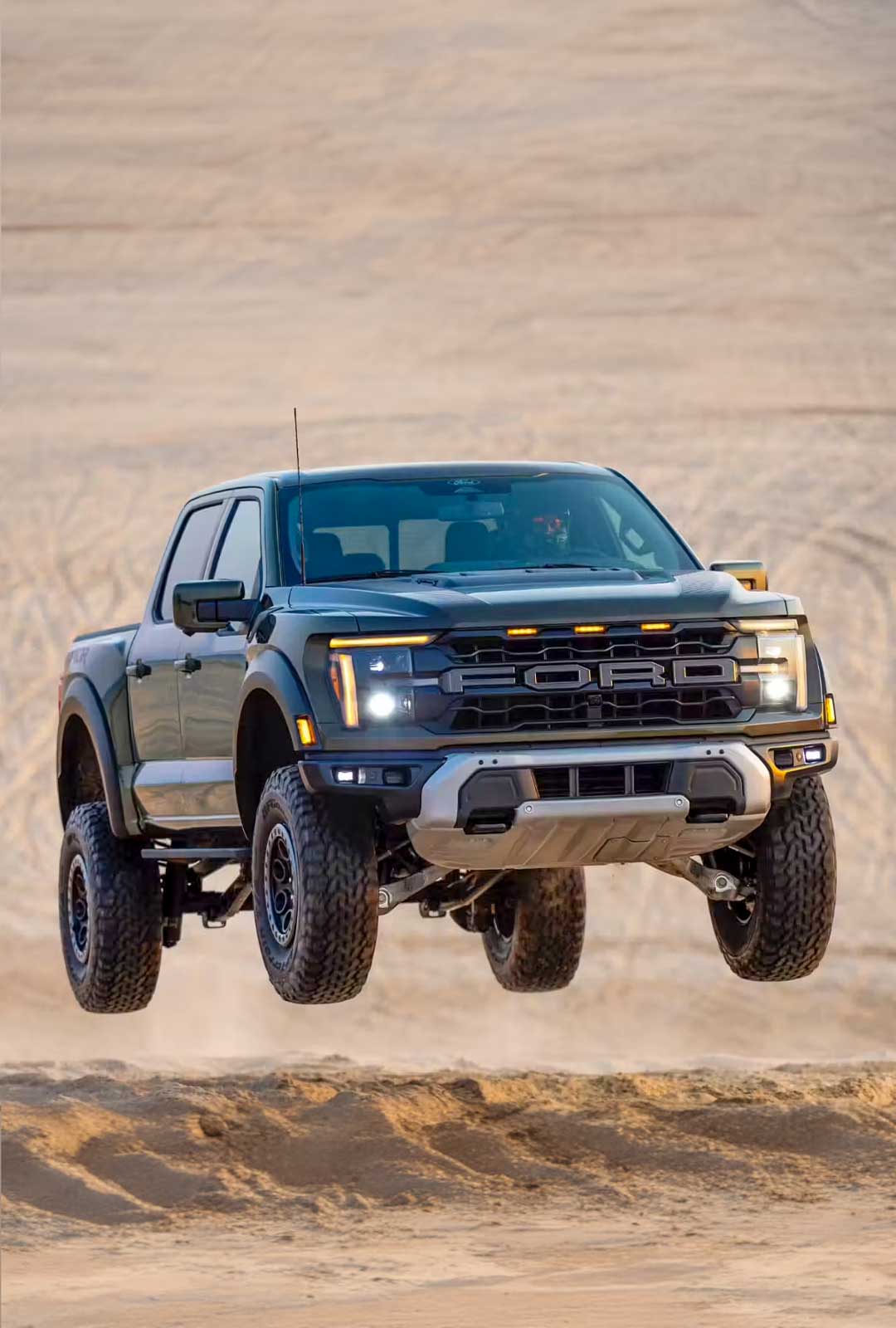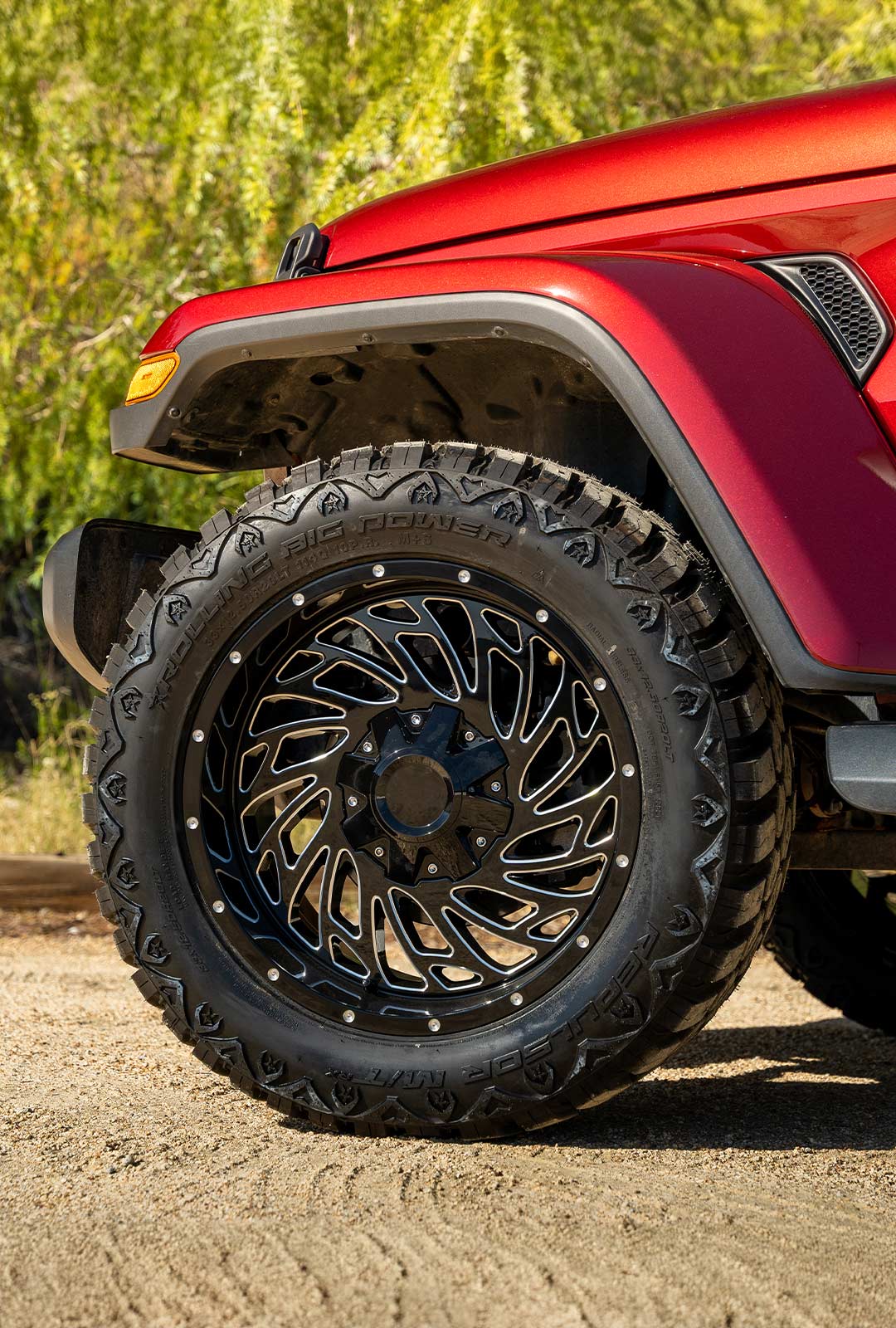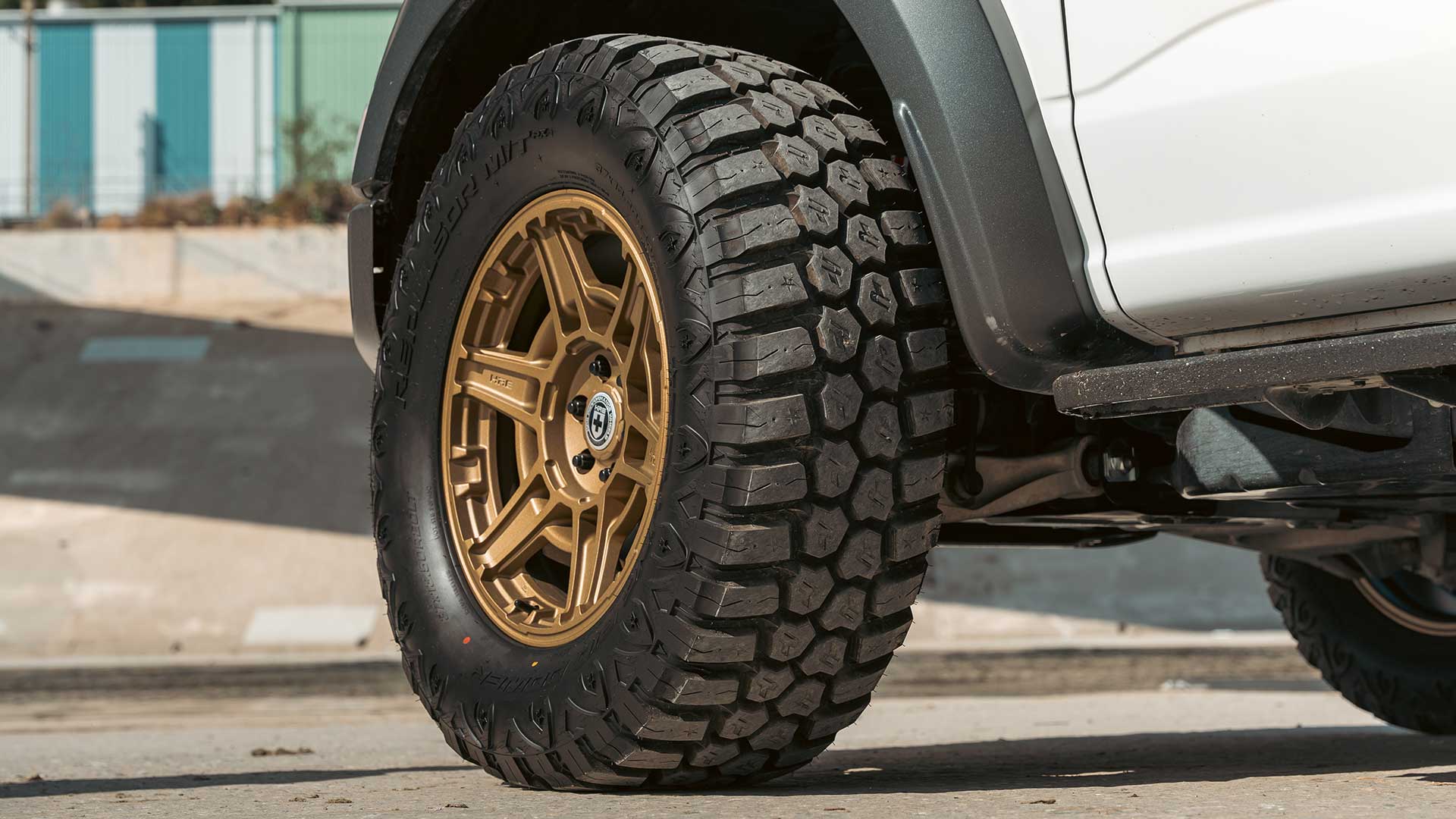At RBP Tires, we know you want to roll with the biggest, baddest tire on your truck. Aggressive, knobby off-road tires, like the Repulsor M/T3, give your truck the look you want and the performance you demand when driving deep into the backcountry. We understand owners want to stick the biggest tire they can fit on their trucks, but unfortunately, the “How big can I go?” question has no simple answer.
Figuring out what tire fits your truck depends on everything from what you want to do with your truck to the make, model, and even the type of modifications you have, or plan to do, on your rig. No worries, though, because the team at RBP is here to help you learn everything you need to know about buying the right size tire for your truck.
Let’s dig in.
Before we get into the big stuff, let’s cover some basics on tire sizing so you can understand the mysterious numbers on the side of your truck’s tires.
Tire size can look like a secret code, but once you crack it, you’ll be a tire-sizing pro. Here’s how to read a tire size like 265/70R17:
The first number (265) is the tire’s width in millimeters. For off-roaders, wider tires can mean better traction on loose surfaces like sand or mud. It’s like the difference between walking on snow in boots versus high heels—more surface area means more grip!
Next up is the aspect ratio (70). This is the height of the tire’s sidewall as a percentage of the width. A higher ratio means a taller sidewall, which is great for off-roading because it allows for more flex and better shock absorption over rough terrain.
The letter “R” stands for Radial construction. Most modern off-road tires are radial, which means the layers run radially across the tire. Radial tires provide a smoother ride and better durability, making them perfect for the highway and the trail.
The final number (17) is the diameter of the wheel in inches that the tire fits. Larger diameters can help with ground clearance, letting you conquer bigger obstacles without getting stuck. Imagine the difference between easy stepping over a log versus tripping over it—bigger tires can make all the difference.
Learn more about to how to read and understand off-road tire sizes.
Manufacturers like Dodge, Toyota, and Ford engineer a specific tire size right from the factory to balance on-road comfort, off-road performance, and fuel efficiency.
Depending on their needs, many owners choose to stick to the stock tire size while swapping out their factory tire for a more aggressive M/T or R/T tire design.
Finding your truck’s stock tire size is simple, even if you’ve never done it before.
Owner’s Manual: The tire information is listed in the specifications section.
Door Jamb Sticker: Check the driver’s side door for a sticker with tire details.
Manufacturer’s Website: Look up your truck model for tire specifications and recommendations.
Still not sure what tire size your truck uses? Check out our in-depth Tires By Vehicle guides.


Building an epic off-road rig means going with a bigger set of wheels and tires, but it’s not as easy as throwing on a set of massive tires and crossing your fingers.
Vehicle’s Make and Model: Not all trucks are created equal. Ford F-150’s, for example, handle bigger tires differently than a Toyota Tacoma.
Suspension Setup: Lift kits and suspension mods can give you the clearance needed for larger tires. It’s like giving your truck a pair of hiking boots instead of sneakers!
Wheel Size and Offset: The wheels themselves need to be up for the challenge. Make sure they can accommodate the wider and taller tires without causing any rubbing issues.
Intended Use: Are you cruising the highways, tackling off-road trails, or hauling heavy loads? Your tire choice should match your truck’s lifestyle.
Ford F-150: It typically comes with 265/70R17 tires, but you can fit up to a 33-inch tire (33×12.50R17) without modifications.
Chevrolet Silverado: Usually comes with 255/70R17 tires, but you can increase it to a 32-inch tire (32×11.50R17).
Toyota Tacoma: Starts with 245/75R16 tires. Size up to 265/75R16, and you’ll have the edge in off-road adventures.
Check out our in-depth Tires By Vehicle guides for your specific make and model.
If the stock size just isn’t cutting it, it’s time to upgrade your rig with capable, all-terrain tires.
Improved Off-Road Capability: Bigger tires can handle rough terrains better, giving you the confidence to tackle more challenging trails. Whether mud, rocks, or sand, larger tires provide better traction and stability.
Aesthetics: Larger tires give your truck a tougher, more aggressive look that stands out on and off the road. They can transform your truck into a head-turning beast.

If you’re going big, you will almost certainly need baseline modifications to fit bigger wheels and tires.
Check the distance between your current tires and the wheel wells, including the front, back, and sides, to ensure ample space for larger tires. Once armed with this information, you can better decide how to modify your ride.
Lift Kits: These provide the extra clearance needed to fit larger tires without rubbing against the fenders. Lift kits come in various sizes and complexities, so choose one that matches your needs.
Trimming: Some areas of the wheel well might need to be trimmed to avoid contact with the new, larger tires. This ensures you avoid damaging your tires and truck body.
Regearing: If you’re significantly increasing tire size, you might need to regear your differential to maintain performance and fuel efficiency.
Alignment: After installing larger tires, a 4×4 alignment is crucial to ensure proper handling and tire wear.
Always consult a professional before making upgrades to ensure compatibility and safety.
Once you’ve upgraded to bigger wheels and tires, the last step is to make sure that your tires properly fit.
Turning: Turn the wheels fully in both directions and measure the clearance. Larger tires shouldn’t rub against the fenders, suspension components, or the body.
Suspension Travel: Check clearance with the suspension fully compressed. Ensure the tires won’t hit the wheel wells or other components when driving over bumps.
When you’re ready to equip your truck with a set of killer tires, RBP tires have exactly what you need.
From the trail-ready Repulsor M/T3 to the road-trip friendly Repulsor R/T, RBP Tires has the right tire for your truck or SUV. We offer off-road tires ranging from 31” up to 40”, making finding the right tire for your truck simple. Looking to upgrade your wheels along with your tires? Our tires support wheel diameters from 15” all the way up to a massive 26”.
High-value performance is what RBP Tires does best.